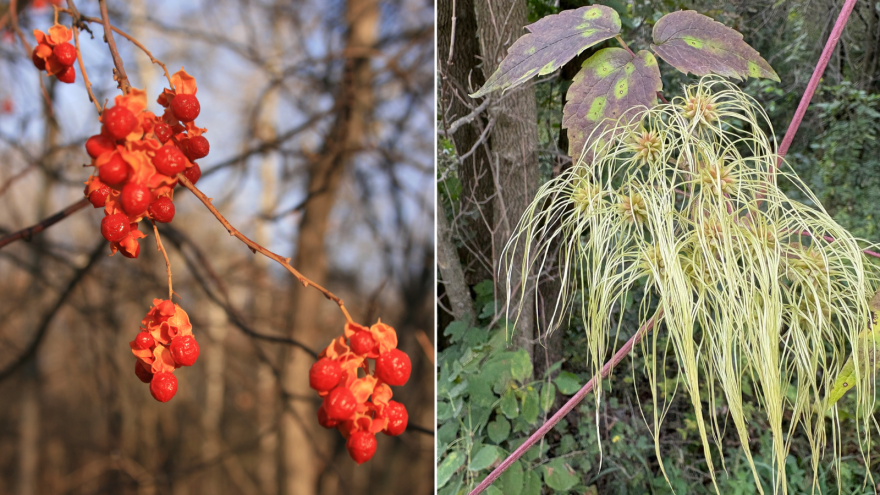If you have been around the woods and thickets across the state over the past few weeks, a couple of interesting vines may have caught your attention. Neither species is well-known, but nonetheless, they put on an interesting show this time of year.
Bittersweet is a woody vine that can grow to considerable height. It is occasionally observed twining up trees in woods and thickets across the state. Bittersweet has separate male and female plants (dioecious). The plants likely go unnoticed in amongst the other foliage during the summer months, but come fall, the bright orange fruits of the female vines often become quite conspicuous.
Bittersweet can be easily overlooked during the summer months. However, during September and October, the leaves of bittersweet are often a pale yellow and perhaps a vertical and/or cascading orientation. And it is the female plants this time of year that produce bright yellow-orange fruits about one-half inch in diameter. When mature, they split open in four orange segments revealing a bright red seed (actually several seeds). They are really quite attractive, and as a result are often used in fall arrangements.
Virgin’s bower or devil’s darning needle also produces separate male and female plants. It is a somewhat woody climbing vine that can grow to 15 feet or so. The leaves are opposite and compound with three coarsely toothed leaflets.
Like bittersweet, it is the female vines that catch our attention this time of year. The fruits of virgin’s bower are not showy in the traditional sense. The fruits are produced in dense heads which include an array of silky thread-like material an inch or two long. Visualize rather loose bundles of young corn silk. These bundles of fruits often are quite eye-catching. And depending upon how the plant has grown up the trees or shrubs, may look to have a definite vertical or cascading appearance. The interesting texture, form and contrast to the background can be very attractive, even during the winter months. As such it is occasionally used as an ornamental.





